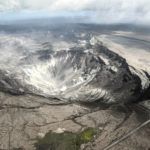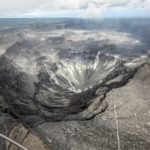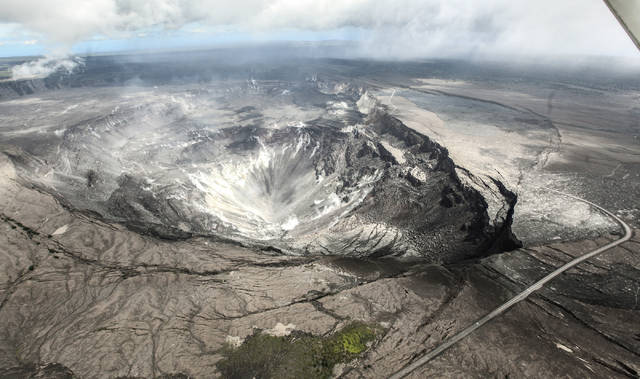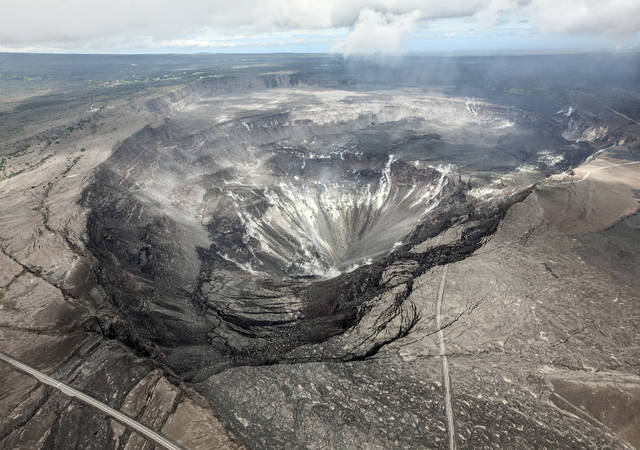HVO: Kilauea’s next eruption probably is years away and likely to be in the caldera


HILO — Kilauea volcano is now the quietest it has been in about four decades.
The Hawaiian Volcano Observatory lowered the volcano’s alert level Tuesday from “advisory” to “normal,” noting it has returned to a noneruptive, background state following last year’s lower East Rift Zone eruption.
“Monitoring data over the past eight months have shown relatively low rates of seismicity, deformation, and gas emission at the summit and East Rift Zone including the area of the 2018 eruption,” said HVO’s notice, posted online Tuesday afternoon.
The eruption, which destroyed more than 700 homes and covered nearly 14 square miles, started May 3 in Leilani Estates. It came to an end in early September when lava was no longer visible in fissure 8.
“The past nearly eight months without active lava at the surface of the volcano marks the longest time interval without eruption since the 17-month period between November 1979 and April 1982,” HVO said.
The volcano erupted almost continuously since the Puu Oo-Kupaianaha eruption began in 1983. That eruption ended last year when magma migrated down rift and erupted in Leilani, starting the largest lower East Rift Zone eruption in more than 200 years.
No other Hawaii Island volcano is listed at higher than a normal advisory.
Sulfur dioxide emissions from the summit, Puu Oo and rift zone vents are less than 100 metric tons per day, well below the pre-2018 levels.
Seismicity remains relatively low and steady.
“Although weekly earthquake counts are elevated above pre-2018 eruption levels, they do not reflect shallowing of magma that typically occurs prior to eruption outbreaks,” HVO said. “Most of these earthquakes are aftershocks of the May 4, 2018, magnitude-6.9 Kalapana earthquake, and they will continue at declining rates.
“Earthquakes such as the March 13, 2019, magnitude-5.5 south flank event reflect ongoing south flank instability and are not a sign of renewed eruption potential.”
Since the early 1800s, Kilauea has seen infrequent periods of no activity. The longest eruption pause was between 1935 and 1952.
Based on past observations, the geologists think the next likely eruption will be in the caldera within a few years. The next rift zone eruption could be in a decade or longer.
“This prognosis assumes a return to Kilauea’s general style of behavior for the past 200 years,” HVO said.
“There remains the possibility that Kilauea’s behavior may return to the dominantly explosive 300 years preceding the early 1800s. Monitoring and ongoing analysis by HVO may be able to determine in advance which style of behavior will eventually prevail, but it is currently too early to tell.”
Email Tom Callis at tcallis@hawaiitribune-herald.com.



